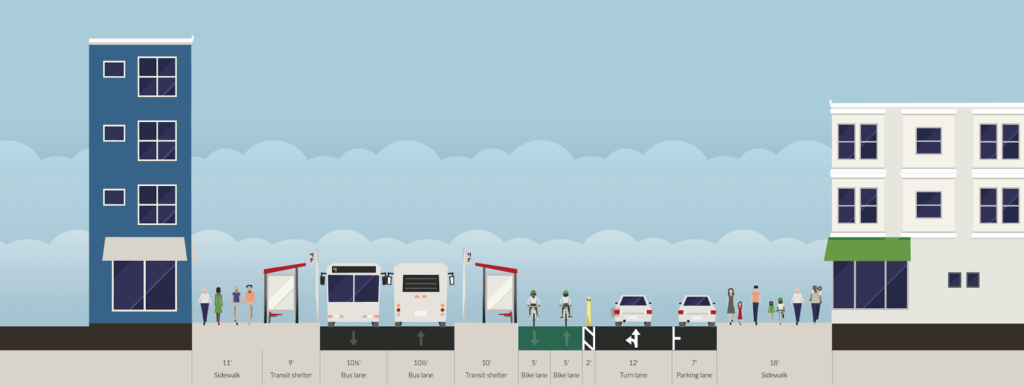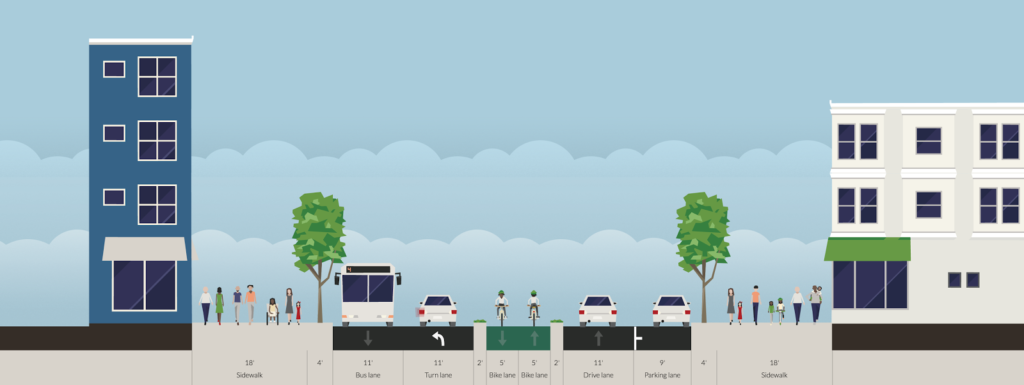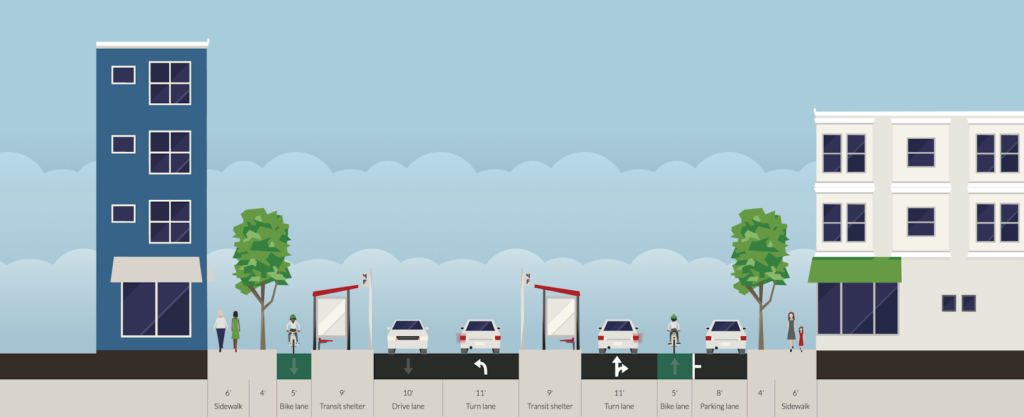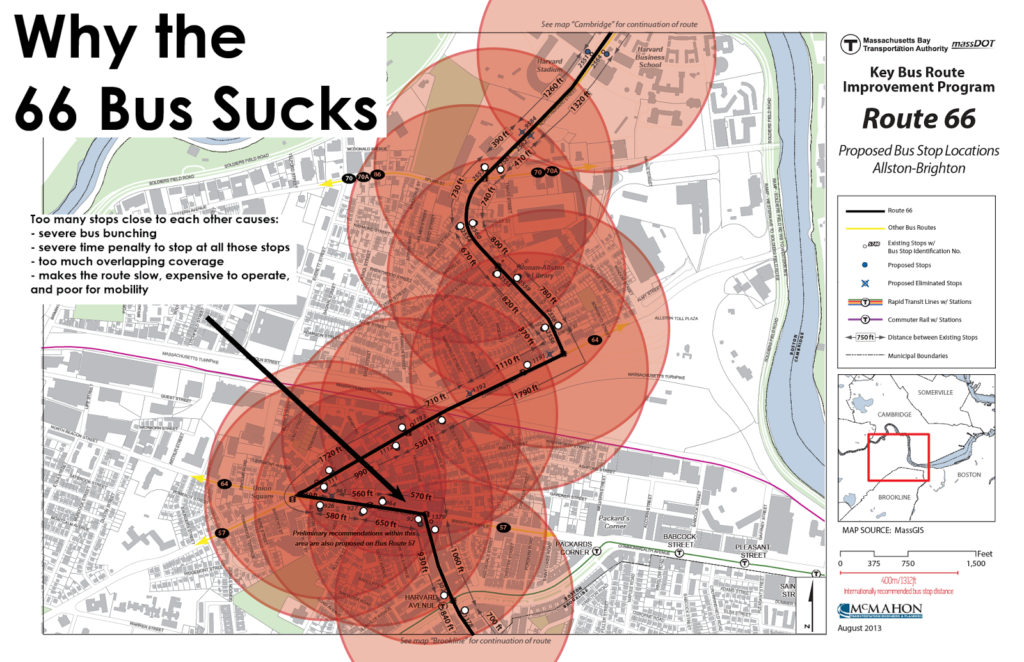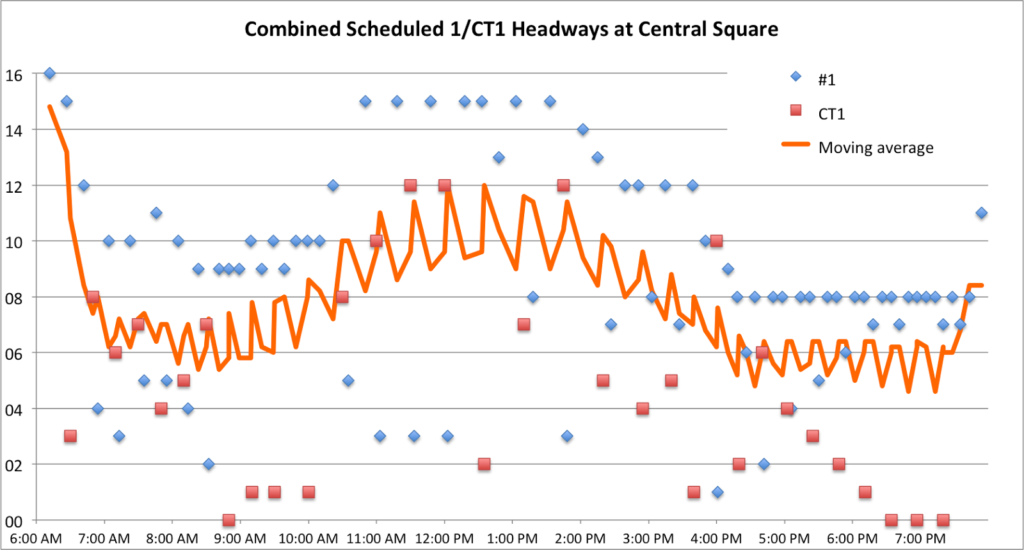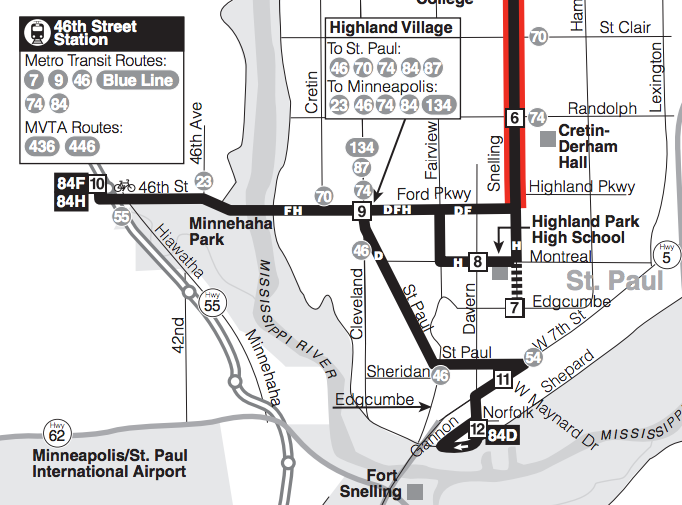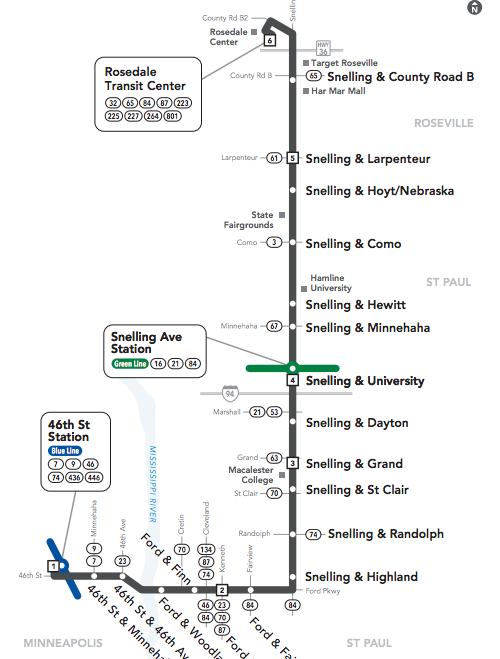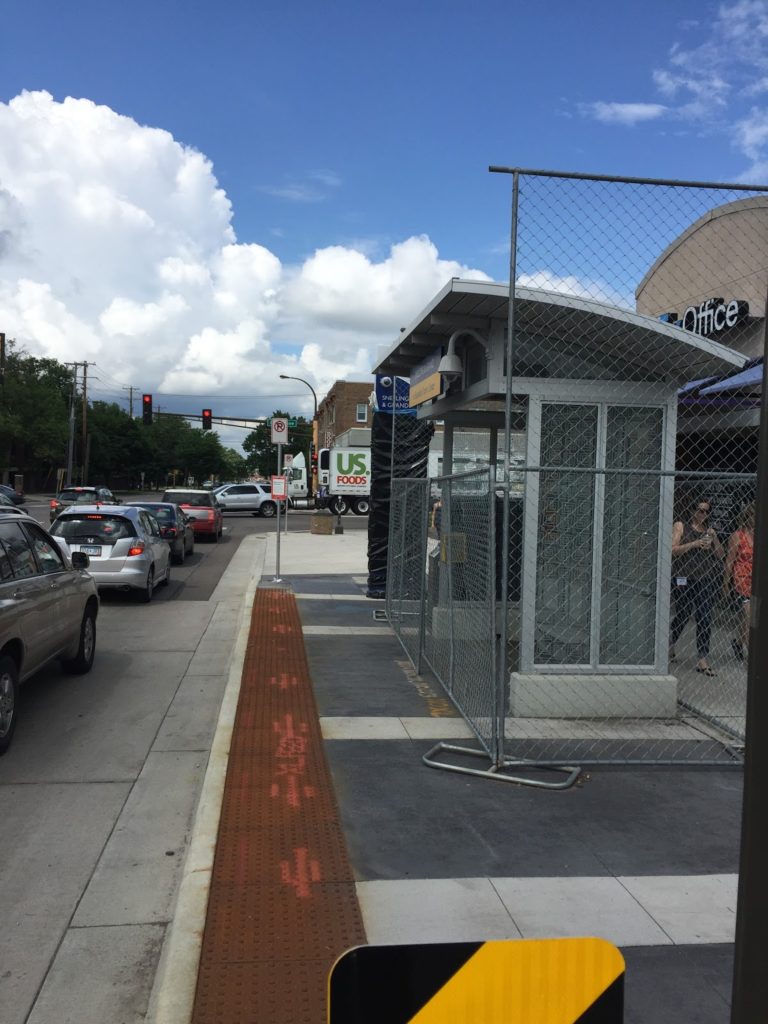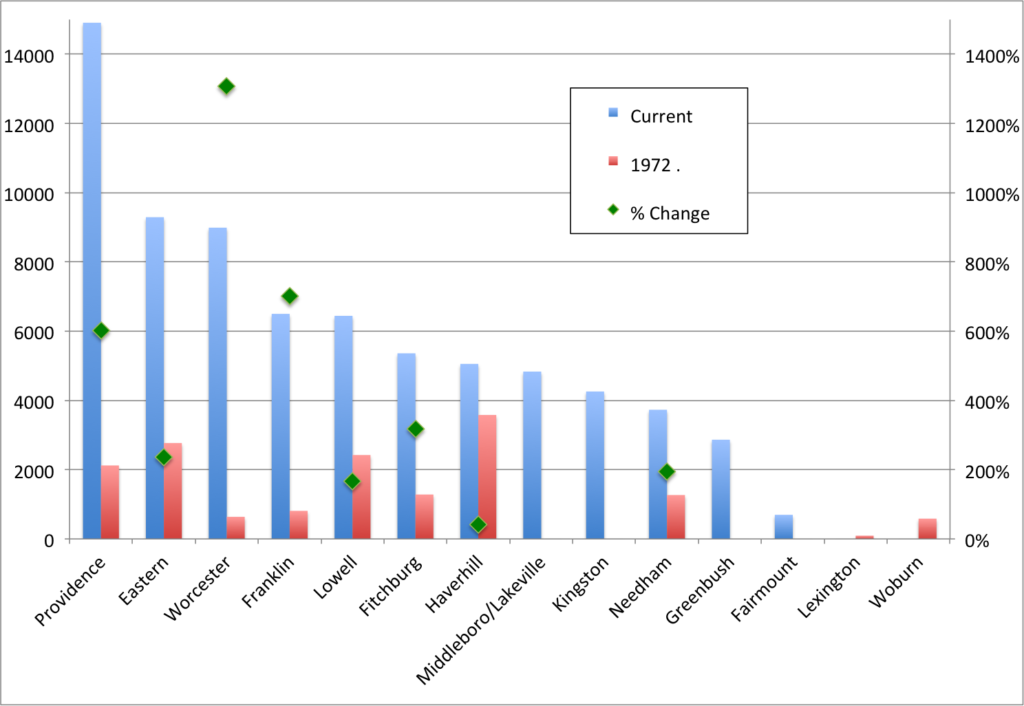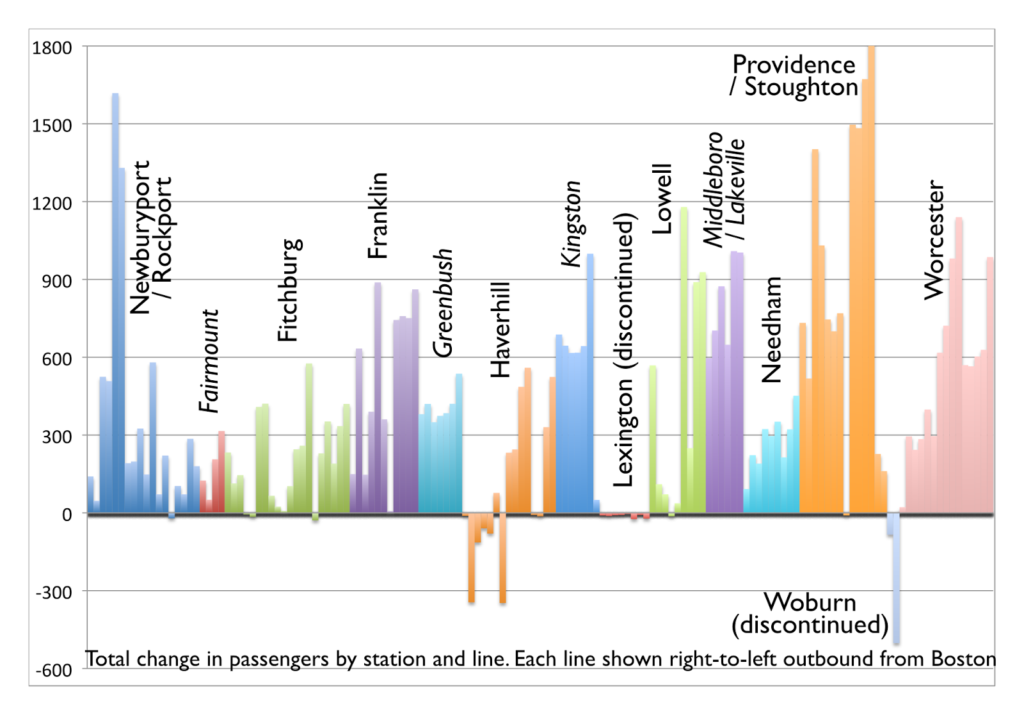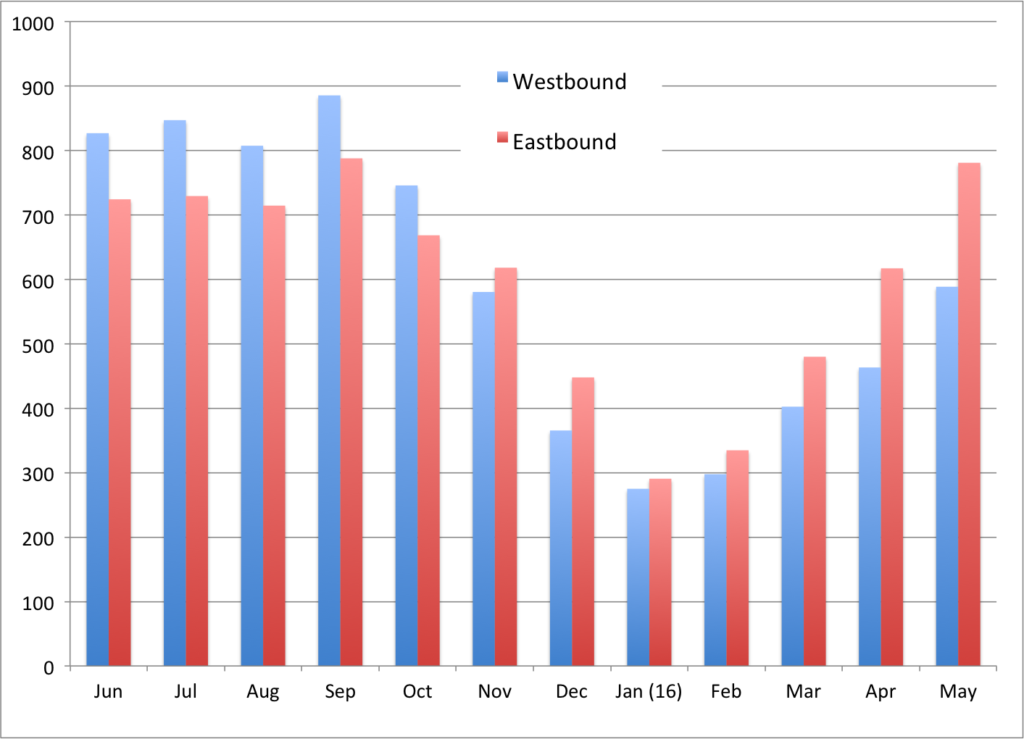The Red-Blue connector is probably the biggest bang-for-your-buck piece of rail infrastructure in the Commonwealth of Massachusetts. With 1300 feet (¼ of a mile) of new subway, it would both provide a much better connection between East Boston, the airport and and the Red Line and serve as a major core capacity project. From the south, the Red Line, at rush hour, operates at peak capacity through downtown to Charles; as it drops passengers at South Station, Downtown Crossing and Park, it takes on transferring passengers and the load stays high. At Charles, however, there are many more destinations than origins, and demand drops. Right now, all Blue Line passengers destined for Kendall or beyond are forced on to the Green or Orange line and the Red Line at this high-utilization point. The Red-Blue connector would allow them to bypass this downtown congestion, reducing the strain on the near- or at-capacity central portion of the subway network. (Oh, and it would also allow a rethinking of Cambridge Street, which is incredibly dangerous for anyone not driving a car. But it has a pretty median.)
This page, in the past, has suggested that it may be cheaper to build an elevated Red-Blue connector, and also cast doubt (twice!) on the MassDOT’s cost estimates. Their claim is that it would cost $750 million to make the extension; which is a cost per mile of $3 billion. This per-mile cost is double the cost of recent tunnel projects in Seattle and San Francisco (where, as you may be aware, they have earthquakes) and even more than the Second Avenue Subway in New York. It’s a completely outlandish number.
And this is entirely by design.
The state is required to plan the Red-Blue connector, but they’re not actually required to build it. Because MassDOT is, at some levels, a morass of incompetence (see Extension, Green Line), they operate under the assumption that nothing new should ever be built, even if there are dramatic improvements to the overall transportation network. Remember, these are the same people who look at ridership growth and declare it “basically flat.” But not only do they want to do as little as possible, they actively stack the deck against their designs to come in so costly that they don’t make sense to build. This is the idea: inflate the cost so much that it would not make any sense to build. It’s deceitful. It’s duplicitous. And at MassDOT, it’s standard operating procedure.
(On the other hand, when MassDOT—or MassHighway—wants to build something, like the outlandish mutil-tunneling of rail lines in Dorchester to add highway capacity to the Southeast Expressway, they don’t bother to put forth a cost estimate. Or remember when we didn’t add a lane to 128 because it was going to cost too much? Yeah, me neither.)
Here’s how it’s done. As we discussed, there is an existing tunnel to Joy Street which was used until the 1950s to move East Boston cars to the old Bennett Street Yards in Harvard Square for heavy maintenance. The obvious solution is to use as much of this tunnel as possible—both to minimize digging in the street and to minimize disruption to current service—yet the state’s two alternatives don’t use it at all. Instead, with minimal justification, they propose a half-mile-long deep bore tunnel 50 feet below grade, tying in with the existing tunnel just west of Government Center. Using tunnel boring machines (TBM) makes sense for tunnels of any length, as the impact to the surface is significantly less. It is also, for longer tunnels, significantly cheaper than cut-and-cover methods. It’s fine to have that as one alternative—there are certainly advantages to using a TBM—but the fact that the alternative analysis only mentions TBMs makes it, well, not really an alternatives analysis at all.
The benefits of a TBM, however, only accrue for longer tunnels. The marginal cost of an extra foot of TBM tunnel is relatively low, but the initial cost is very high. A cut-and-cover tunnel here would require 1300 feet surface impact. Using a TBM would require less, but only slightly. Why? Because you still have to dig launch and recovery boxes for the TBM, and where the tunnel needs to be wider for stations or crossovers, it has to be dug out. Considering the substrate in Boston (mud and clay) a TBM would have to build concrete rings as it digs, and any stations or crossovers between the tunnels would have to be dug out separately. And while the total disruption would be somewhat less than a cut-and-cover tunnel, the disruption would be more spread out and extend much further, from Charles Circle to or beyond Government Center, rather than from Charles to Joy Street. Utilities would be affected in either scheme, and it’s possible that fewer utilities would be affected by a more-contained scheme between Charles Circle and Joy Street.
So in addition to carving up nearly as much street space, and over a longer distance, you’d also incur the cost of using a tunnel boring machine (they’re not cheap). You’d be building nearly a mile of new tunnel, while only incurring the benefit of about a quarter of that. And the costs are therefore much higher. This only makes sense if you don’t actually want to ever build anything. [Update 11/2017: I’ve heard through the grapevine that part of the reason only TBMs were analyzed is that Mayor Menino didn’t want anyone digging up the new streetscape on Charles Street, which he liked. The trees are nice for people driving cars, I guess. 10 years later, the road is a potholed mess, so dig, baby, dig.]
MassDOT’s plan would also build tail tracks under Charles Circle beyond the station. Tail tracks are important: it allows a terminal to continue to operate at full capacity even if a train is incapacitated: it can be shoved in to the tail track and out of the way until the end of service (or until service levels are decreased). However, they take up a good deal of space. This is less of an issue if there is extra space (like there is at Forest Hills, Wonderland or Oak Grove) or at Alewife, where the line was originally built to extend to Arlington (the tail tracks actually do cross the border). But in downtown Boston, the tail tracks require significant extra tunneling under Charles Circle, which is expensive and disruptive.
A different, more outside-the-box option is to create a “pocket track” before the final station. This serves the same purpose as the tail track—train storage near the end of the line—but rather than two long tails, it is in the middle of the two tracks short of the station. All this requires is that the tunnel be built wider here (the same width as the platform to the west requires) for this staging track. Additionally, by utilizing the existing layout at Bowdoin (with, perhaps, some modification for longer trains inbound, or even converting the station to outbound service only), the line would retain the utility of the loop there, which is eliminated in both of the state’s alternatives. While this does result in slower operation in and out of the station, it allows redundancy for turning trains: if there is any congestion or another issue at Bowdoin, some or all trains can be turned temporarily at Government Center to maintain service on the rest of the line. Eliminating this loop eliminates any such redundancy. A pocket track and the retention of the loop are nearly impossible with a bored tunnel but with cut-and-cover simply requires a somewhat wider dig.
By requiring long-term construction closure of the line west of Government Center, the state’s plan would also require new construction of a terminal station there. Government Center does have a crossover to its east, but it is a single crossover, which would not be able to handle the rush hour Blue Line schedule. This would require a new double crossover to be installed in what is a narrow section of tunnel. Utilizing the existing tunnel past Bowdoin would preclude this extra cost, as trains could continue to loop there during construction. There would be no disruption when the extension opened—not even a weekend shutdown to tie in new tracks. The same can’t be said for the State’s scheme.
 |
| State’s plan in red, my plan in blue. |
Here’s a quick rundown on the major elements required to build the state’s version of the Red-Blue Connector:
- A launch box for the TBM
- Cut-and-cover tail tracks west of Charles Station
- Main access to the Charles Station (planned 50′ below grade)
- Charles Station, proposed as a sequentially excavated cavern but with no explanation of how that will be done in the fill-and-clay substrate in the area.
- Emergency egress from Charles Station
- Crossovers east of Charles Station
- New Bowdoin Station (alternative 2 only)
- Modification of existing Bowdoin Station and trackage to serve as ventillation (alternative 1 only)
- Receiving shaft for Bowdoin station
- Cut-and-cover track for connection to existing track at Government Center
- New crossover west of Government Center to allow it to serve as a terminal station
- Total cut-and-cover of approximately 800 feet, assuming the Charles Station can be built below grade (I’m skeptical).
- Main access to Charles Station (20′ below grade)
- Charles Station cut-and-cover
- Secondary access to Charles Station (possible because it would require only 20′ of vertical circulation, rather than 50′)
- Cut-and-cover crossovers and pocket track
- Cut-and-cover connection to existing tail tracks at Joy Street
Here’s my total-guess cost estimate for the cut-and-cover costs (and I think many of these are quite high):
1. Utility Relocation: 0.25 miles at $100m/mi = $25m
2. Cut-and-cover tunnel (mostly 40′ wide): 0.25 mi at $600m/mi = $150m
3. Rail systems: 0.25 mi at $100m/mi = $25m
4. Egress, NFPA130, etc: 0.25 mi at $200m/mi = $50m
5. Station, 1 at $50m = $50m
6. Street rebuilding, 0.33 mi at $75m/mi = $25m
This totals to $375 million, or half of what the state’s plan would cost. There’s no way to know much the state thinks it would cost, because they didn’t bother to analyze this alternative as part of their alternatives analysis.
Now, the state did address the difference in cost between a bored tunnel and a cut-and-cover tunnel. Well, sort of. The draft environmental impact report has the clause:
The resulting total cost (direct plus offsets) to construct a cut-and -cover tunnel shell is about 1.2 times the cost of the mined tunnel method. This differential may slightly decrease when the balance of construction scope (e.g., station components common to both Build Alternatives) is considered. Based on this relative cost differential and the associated environmental and social impacts, schemes utilizing mining methods were selected for further development and evaluation.
Uh, this isn’t really how an alternatives analysis works. In a complex construction project, 20% is basically a margin of error. As we’ve seen in some other deep boring construction, it’s not uncommon to have an unforeseen obstruction which can dramatically increase the cost of a project. This can also be an issue with a cut-and-cover tunnel, although Cambridge Street was widened in the 1920s so the utilities there are a bit less complex than the centuries-old sewers under many Boston streets. The point of an alternatives analysis is too look at different alternatives and see which is the most appropriate. In this case, there are not enough alternatives, and very little actual analysis. I wouldn’t be surprised if a full analysis showed that 1300 feet of a cut-and-cover tunnel was a good deal less expensive than twice as much deep bore tunnel and the additional track connections involved.
And there is no information in this report about how they are going to build the Charles Blue Line Station 50 feet underground in the substrate of Boston with sequential mining. The Second Avenue Subway is being built in hard Manhattan schist which can be blasted apart while still maintaining structural integrity above. I’m not an engineer with this sort of experience, but given that there is no explanation of how it would take place, I’d have to doubt its veracity. The current idea is explained that the tunnels would be bored and then the station areas would be mined out in between the bored tunnels, using their structure to support the road above. I guess that could work. But it seems to add several steps (and thus increase the cost) by building the tunnels only to hack them apart to build space for stations and crossovers in between. When asked in 2011 if it was inflating the costs of the project, MassDOT was very defensive in claiming that they weren’t, and that Very Important People said the same thing, yet they didn’t actually explain why they chose the scheme that they did (beyond “we hired someone”) and as I outline here, it seems they put their thumb on the scale.
Even giving them the benefit of the doubt that a bored tunnel is the best option, the cost estimates seem out of hand. The cost of the 72nd Street Station cavern—which is 1300 feet long, the length of the Red-Blue connector from Charles to Joy Street—plus the track connections to 63rd Street is $431 million, significantly less than the Red-Blue connector. This, for a project taking place 100 feet below the street in New York City, which may be the most expensive construction market in the world.
To put it another way, I find it very hard to fathom that a ¼ mile cut-and-cover tunnel with a single station (for which the headhouse is already built) connecting in to an existing tunnel would cost three quarters of a billion dollars. Or $3 billion per mile. Some more comparisons? The cost of the Longfellow Bridge—twice as long, and rebuilding a century-old bridge while maintaining transit service—is one third the projected cost of Red-Blue. That can’t be right. The Big Dig cost less than $3 billion per mile, to build highway tunnels three times as wide, over and under several active railroad tunnels, with more ventilation and dozens of ramps. And the Red-Blue connector would cost as much? Please.
 |
| A layman’s staging plan for Red-Blue. Simplified, a bit. |
A layman’s plan (as follows) would involve a shallow cut-and-cover tunnel, likely using slurry walls to support the excavation. (See Dig, Big). The tunnel would be 40 feet wide at the Charles Station and to the east for the crossovers and the pocket track, where it would taper to 20 feet for the connection to the existing trackage at Joy Street. The Cambridge Street roadway is at least 64′ wide between Charles Circle and Joy Street; with parking it is 80 feet wide. Assuming the construction could be completed in two phases (two 20-foot-wide excavations) with a 5 foot buffer around each, this would leave 34 feet for road for traffic during any construction, enough for two lanes of travel in each direction (or two in one direction, one in the other and an emergency vehicle access lane). Cambridge Street is currently a horror show for cyclists and not much better for pedestrians, and the project would allow a complete street to be built in its stead.
 |
| See larger-size file here |
Would there be traffic headaches during construction? Sure, just as there have been with the Longfellow Bridge adjacent to the project area. Would it be apocalyptic? Much like the Longfellow, it would not. And the effects would stretch only from Charles Circle to Joy Street, rather than the state’s plan, which would have impacts extending from west of Charles Circle to Government Center, at least. In any case, either scheme will have short term traffic issues, but a long-term benefit, both with fewer vehicles and the potential to build a “complete street” with separated bicycling facilities and better pedestrian facilities. And get rid of the damn median!
There is no logical reason that the Red-Blue connector should be, per mile, the most expensive subway construction in the country. Unless it’s by design. And—yes, to point a finger at MassDOT—that’s exactly what I think has happened.
tl;dr: this is why we can’t have nice things.






